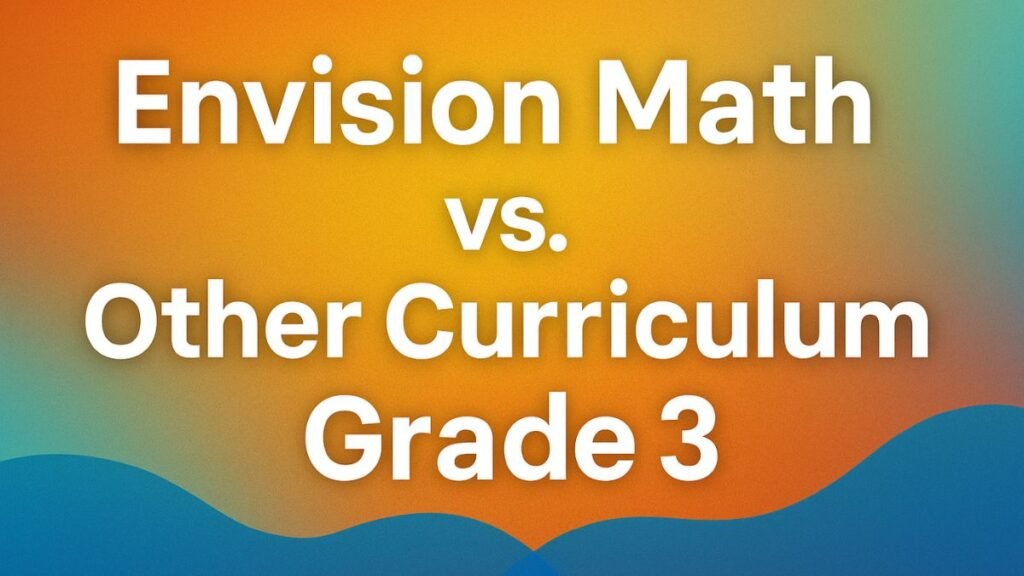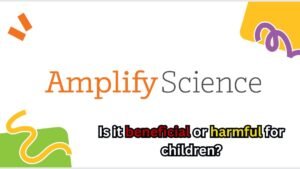Schools must adopt a good and wisely chosen math curriculum today. As the study of mathematics is becoming more practical, interesting and technology-related, it has become difficult to decide which course will be best for the future of the students. Especially in primary classes, where children’s mathematical thinking is formed, if the right curriculum is not chosen, then their ability to learn further may be affected.
In such a situation, a comparison of two big courses – Envision Math Curriculum and Everyday Math – becomes necessary. Both are special in their own way, but their teaching style, structure, and methods of use are different.
In this article we will compare Envision Math and other elementary math courses – especially at the Class 3, Class 5 and Class 8 levels. We will know what the teachers’ experience has been, how useful these courses are in the digital age, and which option might make sense for schools.
Envision Math Curriculum: A Modern Teaching Approach
Students from kindergarten through grade 12 use the Envision Math Curriculum as a modern teaching method designed for mathematics education. Problem-based and visual education strategies in the curriculum help students achieve advanced mathematical understanding. Students develop their interest and learn through 3-Act Math alongside “Let’s Investigate!” and “Pick a Project,” which present real-life challenges in the curriculum. Through the adaptive learning feature, the curriculum delivers customized education to fulfill the individustudent’sent needs.
Envision Math vs. Other Elementary Math Curricula: Comparative Study
Other Elementary Math Curriculum faces comparison against Envision Math. Envision Math employs current educational practices but traditional curriculums follow sequential structured teaching sequences. Spiral review from Everyday Math requires continuous repetition of past concepts for student concept retention. Some teachers find difficulty in student data retention because Envision Math restricts its review practices.
Envision Math vs. Other Curriculum Grade 3

Envision Math vs. Other Elementary Math Curricula the context of Grade 3, topics in Envision Math change rapidly, which can make it difficult for students to understand concepts. One teacher mentioned that when teaching division in Envision Math, the curriculum is so fragmented that constant explanation is needed in the class. In contrast, Everyday Math gradually guides students, giving them a better understanding of the basics.
Envision Math vs. Other Curricula Grade 5
Envision Math vs. Other Elementary Math Curricula Grade 5, the content of Envision Math feels more scattered. Many teachers feel that this curriculum is useful only when there is a substitute teacher. On the other hand, Everyday Math teaches topics in Grade 5 in a logical flow, helping students understand concepts.
Envision Math vs. Other Curricula in Grade 8
Envision Math vs. The Grade 8 Envision Math curriculum demands students understand recent concepts as a major drawback of its implementation. The teacher explained how Envision Math places a requirement of advanced knowledge of previous concepts in students going into Grade 8 creating an educational weakness in this curriculum. Everyday Math allows concepts to develop gradually through its design and thus facilitates students’ movement from earlier grades into Grade 8.
Teacher Experiences: Practical Challenges of Envision Math
Many teachers shared their experiences and mentioned that they had to make changes to their curriculum while using Envision Math. Some teachers termed it a “basic and limited resource curriculum.” One teacher mentioned that the courses in Envision Math are so fragmented that they require constant explanation in class. In contrast, Everyday Math is time-consuming but proves to be beneficial for students in the long run.
Digital Features and Customizations of Envision Math

The standout feature of Envision Math contains an adaptable digital system that enables teachers to modify educational content and monitor student achievements through the application. Envision Math provides three active educational segments titled “3-Act Math” and “Let’s Investigate!” and “Pick a Project” that connect students with real-life math problems and ignite their curiosity.
Envision Math vs. Other Curriculum: An Overall Assessment
When we do an overall assessment of Envision Math vs. other elementary math curricula, it is evident that Envision Math adopts modern teaching methods, while other traditional curricula have a more structured and iterative approach. Envision Math features the availability of digital resources and personalized learning, but its pacing and structure can confuse students at times. In contrast, Everyday Math proves to be more practical and effective due to its in-depth teaching and emphasis on repetition.
Conclusion
A flawless educational curriculum does not exist, but teachers and designers should focus on student comprehension abilities to develop the most appropriate curriculum. Envision Math Curriculum supports modern educational needs with its digital and interactive features; however, students may become confused by its pacing system and structure. The teaching methodology of Everyday Math proves superior because it combines extensive educational methods with strengthened repetition activities. Schools need to make the right curriculum choice by evaluating their student community’s requirements.
FAQs
Q1. What is the main difference between Envision Math and other elementary math curricula?
A1. Envision Math focuses more on topic breadth and digital tools, while others like Everyday Math emphasize concept depth and spiral reviews.
Q2. Is Envision Math suitable for Grade 3 students?
A2. Some educators find its pacing too fast and fragmented for Grade 3 learners without strong foundational skills.
Q3. How does Envision Math perform in Grade 5 compared to others?
A3. Teachers report that it often lacks depth and logical progression, making it harder to teach effectively without supplementation.
Q4. Is Envision Math ideal for struggling students?
A4. It may not be ideal, as it assumes a certain level of prior knowledge and doesn’t include much concept review.
Q5. Do teachers prefer Envision Math or Everyday Math?
A5. Based on experience, many prefer Everyday Math for its comprehensive structure and consistent review, though Envision is praised for its digital integration.



